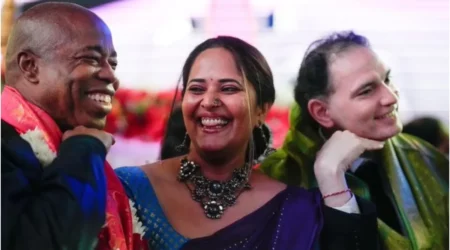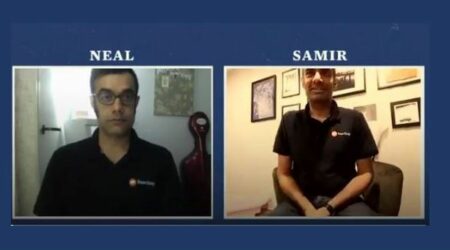By Bal Ram Singh, PhD
Satya or the truth is an element of the Agam gayan as the Ahimsa that defines Dharma, as pointed out in the earlier two articles. There are several ways to state, define, and understand the truth. Most of us understand the truth as in the truth to be spoken.
There is Sanskrit saying,
सत्यं ब्रूयात् प्रियं ब्रूयात् , न ब्रूयात् सत्यम् अप्रियम् ।
प्रियं च नानृतम् ब्रूयात् , एष धर्मः सनातन: ॥
Speak truth in such a way that it should be pleasing to others.
Never speak truth, which is unpleasant to others.
Never speak untruth, which might be pleasant.
This is, sanatana dharma.
Practically speaking, it is understood that speak the truth always but in a pleasant and acceptable manner. For this, one has to find a decent way to state truth that may otherwise be hurtful to someone. Most of us do not have the patience, articulation, or a good understanding to speak the truth. Many a time it is difficult to even know what the truth is. The bare minimum is the efforts one needs to put to speak the truth, which in itself can be beneficial one’s mind. This is primarily because humans, in general, have tendency to speak the untruth for making it impressive or acceptable in social contexts.
An anecdote comes to mind. A father figure very knowledge relative, who in fact was a professor and well-read at least in literature, was sermonizing that it was impossible to commit to speak truth all the time. He gave an example of a butcher running after a cow to kill, and the cow passed by you, turning right into the bushes, and asked you which way the cow turned. The dilemma he presented was if you told the cow turned to the right, the butcher would find the cow and kill it. If, on the other hand, if one had said the cow went to left, one would be lying, incurring sin. He then pronounced he would take the side of incurring sin than to tell the way the cow went. That sounds like a man sacrificing his interest for saving the cow.
He asked me what would I do if such a situation arose with me?
My answer was impromptu, as my knowledge of philosophy or darshan was nearly nil. However, I felt strong about the truth, and therefore I said, I would stand up to the butcher, and would ask him why the hell he was going after the cow. It could have been said a bit more pleasing way, but it will save me from the guilt telling a lie. You read it right, the guilt of telling a lie. Studies have shown that those who lie, their anterior prefrontal cortex becomes more active, and thus perhaps leaving people with less ability to discern right from wrong, making a person less clear about life, in general.
Yama element of Yoga, therefore, requires people to think, act, and tell the truth, which is likely to lead to a more lucid vision and understanding. Mundaka Upanishad has, therefore, stated:
सत्यमेव जयते नानृतं.
सत्येन पंथा विततो देवयानः।
येनाक्रमन्त्यृषयो ह्याप्तकामा,
यत्र सत्सत्यस्य परमं निधानम्॥
(Mundaka Upanishad III.1.6)
Truth alone triumphs, not untruth. The path of truth leads to divine.
Sages having their desires fulfilled, ascend to the realm of the
supreme treasure of truth.
In Atharva Veda (4.9), it is written,
इदं विद्वान् आञ्जन सत्यं वक्ष्यामि नानृतम् ।
सनेयमश्वं गामहमात्मानं तव पूरुष ॥७॥
A wise man keeps the truth close, and speaks the truth, never false, even if he has to give up all his possessions (horses, cows), even himself.
The question is how to learn and train oneself to such commitments for truth? One has to have a Sankalp or pledge to carry out one’s all activities with truth only. The way to train is to practice so much that it becomes a habit. Starting with Satyam bruyat, that means to speak the truth by learning and training oneself, so much so that it becomes a habit. One needs to note that the truth exists at different levels – physical, astral, mental, and spiritual, so this is a journey of self towards the truth as well.
Similarly, for Priyam bruyat, one has to learn and train speaking any and everything pleasantly, which comes easily when one approaches any and all issues lovingly, realizing everything to be a part of the Ishvara playing one’s role. It is like a villain in a film is also important to make good movie and is praised for a good performance.

Balram Singh is a Professor and the President of the Institute of Advanced Sciences, Dartmouth, Massachusetts, researching on Ayurveda, Yoga, Vedic education, and Vedic social and political traditions. He is also adjunct faculty at Jawaharlal Nehru University (JNU), New Delhi.












